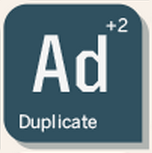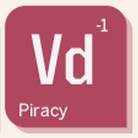What’s Changed With The Periodic Table Of Search Engine Optimization
We’ve updated our Periodic Table Of SEO Success Factors that was created in 2011 to add several new elements, drop a few, broaden it to include “success factors” rather than just “ranking factors” and adjusted weightings of several elements on the table. For those curious about the details, here’s the rundown. First, if you’re not […]
We’ve updated our Periodic Table Of SEO Success Factors that was created in 2011 to add several new elements, drop a few, broaden it to include “success factors” rather than just “ranking factors” and adjusted weightings of several elements on the table. For those curious about the details, here’s the rundown.
First, if you’re not familiar with the table, see our main post today, Now Updated: The Periodic Table Of SEO Success Factors. It will give you an overview as to what the table is about and how to use it.
Here’s a quick preview of the table. Clicking on the image takes you to the table’s home page, where you can see a larger version, an expanded version with descriptions, plus download copies to print or get code to place on your site:
The original table was created in 2011 by the Search Engine Land editors deciding what seemed to make sense to list and how to weight various factors. For the update, we ran a survey listing all the elements on the existing table and inviting people to provide their own rankings, on a scale of 1 to 3. We also asked for ideas on what to add.
We received about 200 submissions in all. It was helpful additional data to have, and the responses largely matched up with what the editors decided to do. But the ultimate decision on what to include in the table and how to weight factors was made by the Search Engine Land editors themselves, after a healthy discussion. With most elements, nothing changed. The exceptions are covered below.
New Name, To Encompass “Success Factors”
The biggest change was the new name. Some factors, such as Hd (Description) or Hs (Structure) don’t necessarily help a page rank better. But if a page does rank, the additional information they provide may encourage a click, which is the ultimate goal of most SEO. They’re important to do for SEO success, thus broadening the scope of the table to “SEO success factors” felt right. Still, most factors listed are about increasing the odds of ranking better.
Blocking Factors Dropped
The previous table had two “Blocking Factors” that were listed. That’s because blocking was a feature that Google was heavily promoting at the time the table was created. This year, Google officially discontinued the blocked sites feature it offered, after the feature itself disappeared in January 2012. A Chrome extension exists for those who still want to block sites. But given how few know about this and likely use it, keeping blocking on the table made little sense. Ultimately, any impact of blocking is better reflected within the Ta (Authority) element.
Violations Integrated
The previous table listed violations grouped on their own. Still, the really savvy might have noticed that particular violations were aligned under the general category of factors they belonged to. For example, Vt (Thin) is a violation involving having “thin” or “shallow” content. That’s why, though listed on its own, it was still aligned below the Content column. In the new table, violations are now integrated with the chart, listed within the categories they belong to. You’ll still know these are bad things because of their red color, the fact they all begin with V and because they have negative weighting figures, such as -3.
 Ad (Duplicate) Added
Ad (Duplicate) Added
Another new element covering duplicate content was added. Both SEOs and the search engines have emphasized the importance of trying to control for issues with duplicate content more in the past two years. This was a suggestion that came up in free-form comments from the survey plus the editors felt it was important. Indeed, the editors felt it was so important a factor to consider that it comes onto the table with a +2 weight.
 Hs (Structure) Added
Hs (Structure) Added
A new element covering structured data was added. The ability to add structured data has increased greatly over the past two years, with Google even recently adding yet another tool, the Structured Data Markup Helper, to encourage it. Those in the survey even thought it should come on with a weight of +2. The editors were more conservative, feeling including it on the chart for the first time and with a +1 weight was a big enough recognition of its growing importance.
 Ti (Identity) Added
Ti (Identity) Added
The last new positive element added covers what the editors decided to call “Identity.” This emerged from discussions about the growth of authorship, the ability especially with Google to definitively link a story with a verified author. There’s still no Author Rank boost yet, but that could come. As Google continues to ramp up authorship, and as Google adds ways for publishers to better claim their identities through Google+, a more inclusive Identity element made sense. When called “Authorship” in the survey, respondents felt it should come on at +2. The editors took a more conservative view, bringing it on at +1.
 Va (Ads) Added
Va (Ads) Added
A new negative element covering having too many ads was added. This was a direct result of Google’s Top Heavy Update that was launched in 2012. While Top Heavy targets sites with too many ads “above the fold,” it seems reasonable that Google and other search engines might expand efforts to penalize pages that seem to be more about pushing ads than content. Those in the survey thought it should come weighted -2; the editors chose a more conservative figure of -1.
 Vd (Piracy) Added
Vd (Piracy) Added
Another new negative element was added that relates to sites that may host or be associated with online piracy. This was a direct result of Google’s Pirate Update that was launched in August 2012. Those surveyed thought it should come on at -2. The editors were more conservative, especially as this isn’t an issue for most publications, and so brought it on at -1.
Changed Weightings
These elements had changes to their weightings from the previous version:
- Lt (Links) – decreased from +3 to +2
- Ph (History) – increased from +2 to +3
- Ps (Social) – increased from +1 to +2
Lt (Links) covers the impact that text within a link, anchor text, has on rankings. This has long been considered one of the most important ranking factors by SEOs, though search engines have long said or hinted at that they have the ability to determine what a link is about by other methods, such as surrounding text.
In the wake of the Penguin Update, many began to wonder if having too much anchor text using the same phrase could somehow get a site penalized. Really, that’s a strong indicator that a site may have been buying links (Vp) or link spamming (Vl).
For whatever their reasons, respondents thought the previous weight of +3 should drop to +2. The editors also felt dropping the weight might put a better focus on the link factor that is far more important, link quality (Lq).
Ph (History) covers the impact someone’s personal search history has on rankings. Previously weighted +1, respondents felt it should go to +2. We’ve gone higher to +3, given that search history has such a huge impact on the results that people see, especially since Search Plus Your World launched last year.
Ps (Social) covers the impact someone’s social connections have on rankings. Previously weighted +1, respondents felt it should stay there. However, the editors thought it should increase to +2, because social connections are having a much stronger impact on rankings.
Other Notes
As said earlier, in most cases, elements didn’t change and respondents agreed with the editors in how things were ranked. Aside from the exceptions already noted above, here’s where respondents differed from the editors:
- Ta (Authority) – Kept at +3, respondents thought it should go to +2
- Hh (Headers) – Kept at +1, respondents thought it should go to +2
- As (Speed) – Kept at +1, respondents thought it should go to +2
- Au (URLs) – Kept at +1, respondents thought it should go to +2
- Ln (Number) – Kept at +1, respondents thought it should go to +2
- Vs (Stuffing) – Kept at -1, respondents thought it should go to -2
- Vh (Hidden) – Kept at -1, respondents thought it should go to -2
- Vc (Cloaking) – Kept at -3, respondents thought it should go to -2
Finally, the survey asked respondents if, among other new suggestions, a new element relating to mobile optimization should be added. The results were that one should, weighed at +2. Then the editors had a long debate about whether this should be included.
Ultimately, as the differences between the mobile world and the desktop world blend, the editors didn’t feel it made sense to add. Instead, we felt that publishers should indeed strongly consider the experience mobile visitors have when coming to their sites but that the SEO aspects of this are already covered in other elements such as Ce, Engagement.
Related Posts
Below are links to where you can view the full Periodic Table Of SEO Success Factors, its associated guide to SEO as well as two overviews of SEO from Search Engine Land that you may find useful:
Opinions expressed in this article are those of the guest author and not necessarily Search Engine Land. Staff authors are listed here.
Related stories

 Ad (Duplicate) Added
Ad (Duplicate) Added Hs (Structure) Added
Hs (Structure) Added Ti (Identity) Added
Ti (Identity) Added Va (Ads) Added
Va (Ads) Added Vd (Piracy) Added
Vd (Piracy) Added